Key Takeaways
1. The Google era is ending, ushering in a new decentralized Internet
Google's security foibles, its "aggregate and advertise" model, its avoidance of price signals, its vertical silos of customer data, and its visions of machine mind are unlikely to survive the root-and-branch revolution of distributed peer-to-peer technology, which I call the "cryptocosm."
The centralized model is failing. Google's dominance in the digital world is built on a foundation of centralized data collection, free services, and targeted advertising. However, this model is becoming increasingly problematic due to:
- Security vulnerabilities: Centralized data repositories are prime targets for hackers
- Privacy concerns: Users are growing wary of how their personal data is collected and used
- Lack of true price signals: "Free" services obscure the real costs and value of digital products
A decentralized future is emerging. The cryptocosm, powered by blockchain technology, offers an alternative vision:
- Distributed networks: No single point of failure or control
- User-owned data: Individuals have greater control over their personal information
- Micropayments: Enable more accurate pricing of digital goods and services
This shift promises to reshape the Internet, returning power to users and fostering a more diverse, innovative digital ecosystem.
2. Blockchain technology will revolutionize trust, security, and transactions
Beyond the suppliers of ads that no one wishes to see, Google's main role is intermediator. Although Google's list of business principles leads off with "The customer comes first," Google has few end customers at all.
Blockchain eliminates middlemen. The technology behind cryptocurrencies has far-reaching implications beyond digital money:
- Immutable ledgers: Create tamper-proof records for various industries (e.g., supply chains, voting systems)
- Smart contracts: Enable automated, trustless agreements without intermediaries
- Decentralized identity: Users can control and verify their own digital identities
Trust becomes programmable. Blockchain's key innovation is its ability to create trust through cryptography and consensus mechanisms, rather than relying on central authorities:
- Reduced fraud: Transparent, verifiable transactions
- Lower costs: Elimination of intermediaries and associated fees
- Increased efficiency: Faster settlement times for various types of transactions
This technology has the potential to disrupt numerous industries, from finance and real estate to healthcare and government services, by fundamentally changing how we establish and maintain trust in digital systems.
3. Artificial intelligence is overhyped; human consciousness remains supreme
Thinking is conscious, willful, imaginative, and creative. A computer running at gigahertz speeds and playing a deterministic game like chess or Go is only a machine.
AI's limitations are overlooked. While artificial intelligence has made impressive strides in specific domains, it falls short of true human-like cognition:
- Narrow vs. general intelligence: AI excels at specialized tasks but lacks broad understanding
- Consciousness gap: Machines process information but don't possess self-awareness or emotions
- Creativity deficit: AI can optimize and recombine, but struggles with genuine innovation
Human minds remain unique. Key aspects of human intelligence that AI has yet to replicate:
- Intuition and insight
- Ethical reasoning and moral judgment
- Abstract thinking and metaphorical understanding
- Emotional intelligence and empathy
The focus should be on developing AI as a tool to augment human capabilities, rather than attempting to replace human consciousness. This approach will lead to more productive and beneficial applications of AI technology.
4. The current financial system is flawed; cryptocurrencies offer solutions
All wealth is the product of knowledge. Matter is conserved; progress consists of learning how to use it.
Traditional finance is inefficient. The current global financial system suffers from several critical issues:
- Centralized control: Central banks and large financial institutions wield disproportionate power
- Inflationary pressures: Fiat currencies are subject to devaluation through money printing
- High transaction costs: International transfers and currency exchanges incur significant fees
- Limited access: Billions of people remain unbanked or underbanked
Cryptocurrencies provide alternatives. Digital currencies and blockchain-based financial systems offer potential solutions:
- Decentralization: No single entity controls the currency supply or transaction processing
- Deflationary by design: Many cryptocurrencies have fixed or predictable supply schedules
- Low-cost transactions: Peer-to-peer transfers can be faster and cheaper than traditional methods
- Financial inclusion: Anyone with internet access can participate in the crypto economy
While cryptocurrencies face challenges in terms of scalability, regulatory acceptance, and price stability, they represent a promising path towards a more efficient and equitable financial system.
5. Virtual reality will transform education, training, and human experience
VR puts the conscious human being at the center of the sphere, letting you "feel your consciousness" in its pure form.
Immersive learning revolutionizes training. Virtual reality technology is reshaping how we acquire skills and knowledge:
- Experiential learning: Users can "learn by doing" in safe, controlled environments
- High-stakes scenarios: Practice dangerous or rare situations without real-world risks
- Customized experiences: Tailor training to individual learning styles and needs
VR expands human perception. Beyond practical applications, virtual reality offers new ways to experience and understand the world:
- Empathy building: Step into others' perspectives and experiences
- Scientific visualization: Explore complex data sets and abstract concepts in 3D space
- Cultural preservation: Recreate historical sites and events for immersive study
As VR technology becomes more sophisticated and accessible, it has the potential to fundamentally alter how we learn, work, and interact with our environment and each other.
6. Silicon Valley's "free" business model is unsustainable and deceptive
If you do not charge for your software services—if they are "open source"—you can avoid liability for buggy "betas". You can happily escape the overreach of the patent bureau's ridiculous seventeen-year protection for minor software advances or "business processes" like one-click shopping. But don't pretend that you have customers.
"Free" comes at a cost. The dominant business model of many tech giants relies on offering free services in exchange for user data and attention:
- Privacy trade-offs: Users' personal information becomes the product
- Attention economy: Platforms are designed to maximize engagement, often at the expense of user well-being
- Quality concerns: Without direct monetary incentives, service quality may suffer
A new economic model is needed. Alternatives to the "free" paradigm are emerging:
- Micropayments: Enable users to pay small amounts for specific content or services
- Subscription models: Offer ad-free, premium experiences for a recurring fee
- Tokenization: Use blockchain-based systems to reward users for their contributions and attention
These approaches aim to create more sustainable, user-centric business models that align incentives between service providers and users.
7. A new system of the world is emerging, centered on human creativity
The new system of the world must reverse these positions, exalting the singularities of creation: mind over matter, human consciousness over mechanism, real intelligence over mere algorithmic search, purposeful learning over mindless evolution, and truth over chance.
Rejecting technological determinism. The current paradigm often places technology at the center, diminishing the role of human agency and creativity:
- AI supremacy myth: The belief that machines will inevitably surpass human intelligence
- Data-driven decision making: Overreliance on algorithms at the expense of human judgment
- Technological solutionism: The assumption that every problem has a technological fix
Embracing human-centric innovation. The emerging system recognizes the unique value of human consciousness and creativity:
- Augmented intelligence: Developing tools that enhance, rather than replace, human capabilities
- Ethical innovation: Prioritizing technologies that serve human values and well-being
- Interdisciplinary approaches: Combining insights from science, philosophy, and the arts
This shift in perspective encourages a more balanced and humane approach to technological development, one that harnesses the power of innovation while preserving the essential role of human consciousness and creativity.
8. The great unbundling: Cryptocurrencies disaggregate roles of money
In the great unbundling, the blockchain generates tokens of functionality (from BAT for attention to GNT for supercomputing, to RNDR for graphics processing functions). It creates mediums of exchange (bitcoin, ether, Monero, Zcash), stores of value (bitcoin, ether, and others), rivets of security (Blockstack, Rivetz), software languages (Solidity, Golem), and measures of wealth.
Traditional money is multifaceted. Historically, money has served several functions simultaneously:
- Medium of exchange
- Store of value
- Unit of account
Cryptocurrencies enable specialization. The blockchain ecosystem allows for the separation of these functions into distinct tokens and platforms:
- Transactional currencies: Optimized for fast, low-cost transfers
- Store of value tokens: Designed for long-term wealth preservation
- Stablecoins: Pegged to traditional assets to serve as units of account
- Utility tokens: Represent specific rights or services within a blockchain ecosystem
This unbundling allows for greater flexibility and efficiency in the digital economy, as each type of token can be optimized for its specific purpose.
9. Entrepreneurship and innovation are stifled by current regulatory environment
The harvest of this system and its horrendous student debt is whole generations driven out of the entrepreneurial economy.
Overregulation hinders progress. The current regulatory landscape poses significant challenges to innovation and entrepreneurship:
- High compliance costs: Startups struggle to navigate complex regulatory requirements
- Risk aversion: Excessive liability concerns discourage bold experimentation
- Incumbent protection: Regulations often favor established players over new entrants
Education system misalignment. Traditional higher education is failing to prepare students for the entrepreneurial economy:
- Crushing student debt: Graduates are burdened with loans, reducing risk-taking capacity
- Outdated curricula: Many programs lag behind rapidly evolving industry needs
- Credential inflation: Over-emphasis on degrees rather than practical skills and experience
Fostering innovation requires reform. Potential solutions to encourage entrepreneurship:
- Regulatory sandboxes: Safe spaces for startups to test innovative ideas with reduced regulatory burden
- Alternative education models: Emphasize practical skills, entrepreneurship, and lifelong learning
- Access to capital: Expand funding options beyond traditional venture capital (e.g., crowdfunding, token sales)
Creating a more supportive environment for innovation is crucial for maintaining economic dynamism and solving complex global challenges.
10. Time is the ultimate scarce resource in economics and technology
Time is what remains scarce when all else becomes abundant: the speed of light and the span of life.
Time's fundamental role. In an era of increasing material abundance and technological progress, time emerges as the ultimate constraint:
- Physical limits: Speed of light bounds information transfer and processing
- Biological limits: Human lifespan caps individual learning and experience
- Economic scarcity: Time is the one resource that cannot be manufactured or multiplied
Implications for technology and economics:
- Value of immediacy: Real-time services and instant gratification become premium offerings
- Attention economy: Companies compete for users' limited time and focus
- Time-based currencies: Some propose using time as a more equitable basis for money
Rethinking progress. Recognizing time's scarcity encourages a shift in how we measure advancement:
- Quality over quantity: Valuing experiences and relationships over material accumulation
- Efficiency and automation: Developing technologies that save time for human-centric activities
- Long-term thinking: Balancing immediate gains with sustainable, time-conscious development
By centering time as the core scarce resource, we can develop more meaningful metrics for progress and design technologies and economic systems that truly enhance human well-being.
Last updated:
FAQ
What's Life After Google about?
- Decline of Big Data: The book explores the decline of traditional big data companies like Google, highlighting their unsustainable models.
- Rise of Blockchain: It emphasizes the potential of blockchain technology to create a more secure and equitable digital economy.
- Critique of Centralization: Gilder critiques the monopolistic practices of Silicon Valley, advocating for decentralized systems that empower users.
Why should I read Life After Google?
- Insightful Predictions: The book offers predictions about the transition from centralized to decentralized systems, based on historical trends.
- Understanding Blockchain's Impact: Readers gain insights into how blockchain can transform industries and enhance privacy and security.
- Critical Analysis: Gilder challenges conventional wisdom, encouraging readers to think critically about the future of digital economies.
What are the key takeaways of Life After Google?
- Decentralization is Essential: Emphasizes the shift from centralized data control to decentralized systems through blockchain.
- Critique of AI and Big Data: Argues that reliance on AI and big data leads to loss of control and is unsustainable.
- New Economic Models: Discusses emerging models prioritizing security and individual empowerment over traditional advertising-driven models.
What are the best quotes from Life After Google and what do they mean?
- “The Internet has not delivered...”: Reflects disappointment with the Internet's failure to protect user privacy and control.
- “Security is the foundation...”: Emphasizes the importance of security as the basis for all digital services.
- “The future is not flat.”: Suggests a complex, multidimensional future involving decentralized systems.
How does Life After Google critique Google’s business model?
- Advertising-Driven Revenue: Critiques Google's reliance on advertising, leading to privacy loss and control issues.
- Centralization of Power: Argues that Google's centralized data control creates vulnerabilities and inefficiencies.
- Failure to Deliver: Points out Google's failure to provide a user-centric Internet experience, prioritizing profit instead.
What is the cryptocosm as defined in Life After Google?
- Definition of Cryptocosm: A new paradigm based on blockchain and decentralized systems, contrasting with centralized models.
- Focus on Security and Privacy: Prioritizes security and privacy, allowing greater individual control over data.
- Emergence of New Technologies: Encompasses technologies enabling decentralized finance and peer-to-peer transactions.
What role does blockchain play in Life After Google?
- Foundation of the Cryptocosm: Blockchain is the foundational technology enabling secure, decentralized transactions.
- Restoration of Privacy and Control: Allows individuals to regain control over their data and privacy.
- Facilitation of New Economic Models: Enables new models prioritizing security and individual empowerment, including cryptocurrencies.
How does Gilder compare bitcoin to gold in Life After Google?
- Digital Scarcity: Compares bitcoin to gold, emphasizing both as forms of digital scarcity.
- Deflationary Nature: Highlights bitcoin's capped supply, making it deflationary and volatile.
- Historical Context: Discusses bitcoin within the broader historical context of monetary systems.
What are the challenges facing bitcoin and cryptocurrencies according to Gilder?
- Volatility Issues: Notes bitcoin's volatility, making it difficult as a stable currency.
- Regulatory Pressures: Discusses potential regulatory challenges that could stifle innovation.
- Need for Intermediation: Argues for a banking function to stabilize cryptocurrencies and facilitate transactions.
How does Life After Google address the concept of privacy?
- Critique of Centralization: Critiques centralized Internet systems for compromising user privacy.
- Blockchain as a Solution: Posits blockchain can enhance privacy by decentralizing data control.
- Architectural Approach to Security: Advocates for systems that inherently protect privacy through their architecture.
What are the Ten Laws of the Cryptocosm in Life After Google?
- Security First: Security must be the foundational principle of any digital system.
- Centralization is Not Safe: Centralized systems are vulnerable; decentralization is more secure.
- Nothing is Free: Highlights hidden costs of free services, particularly in privacy and data security.
How does Gilder envision the future of technology in Life After Google?
- Decentralized Systems: Envisions a future dominated by decentralized systems based on blockchain.
- Empowerment of Individuals: Emphasizes individual empowerment through control over data and transactions.
- Innovation Beyond AI: Argues true progress will come from decentralized technologies prioritizing security and empowerment.
Review Summary
Life After Google receives mixed reviews. Many praise Gilder's insights on blockchain, cryptocurrencies, and the future of technology, finding his critique of Google's data-centric model compelling. However, some criticize the book's dense technical language, scattered narrative, and lack of coherent thesis. Readers appreciate Gilder's analysis of AI limitations and the potential of decentralized systems, but some find his arguments unconvincing or poorly explained. The book is seen as thought-provoking for tech enthusiasts but potentially challenging for general readers.
Similar Books

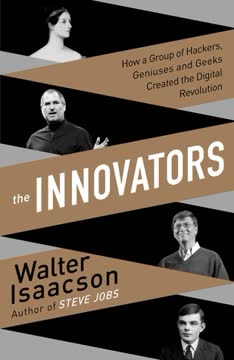

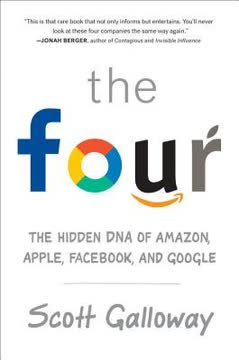


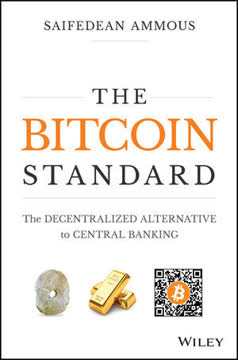
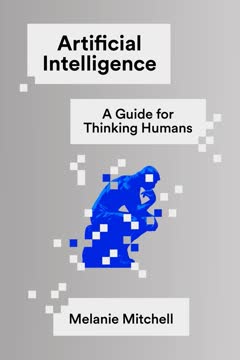
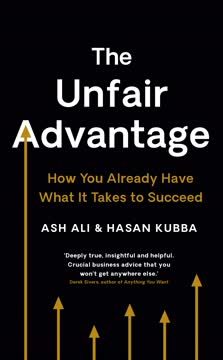

Download PDF
Download EPUB
.epub digital book format is ideal for reading ebooks on phones, tablets, and e-readers.






